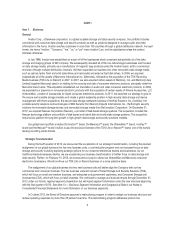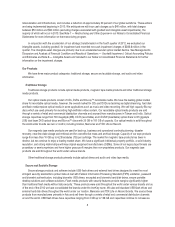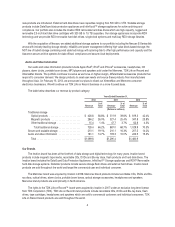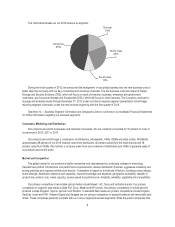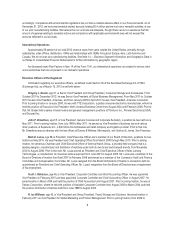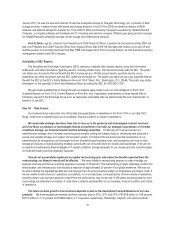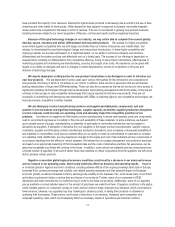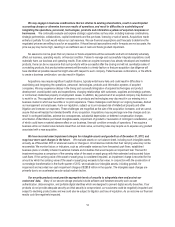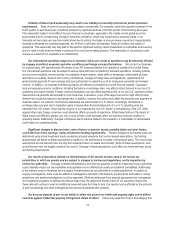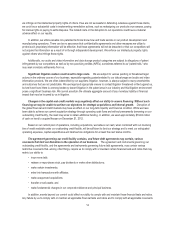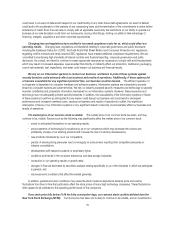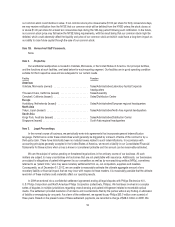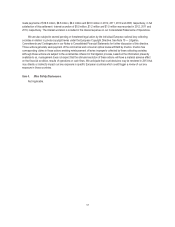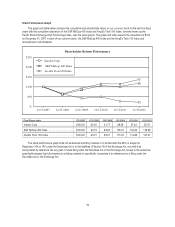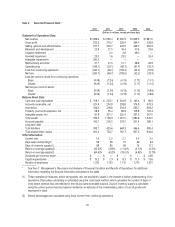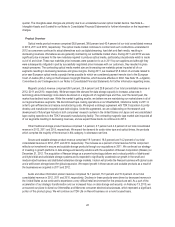Memorex 2012 Annual Report Download - page 15
Download and view the complete annual report
Please find page 15 of the 2012 Memorex annual report below. You can navigate through the pages in the report by either clicking on the pages listed below, or by using the keyword search tool below to find specific information within the annual report.We may engage in business combinations that are dilutive to existing shareholders, result in unanticipated
accounting charges or otherwise harm our results of operations, and result in difficulties in assimilating and
integrating the operations, personnel, technologies, products and information systems of acquired companies or
businesses. We continually evaluate and explore strategic opportunities as they arise, including business combinations,
strategic partnerships, collaborations, capital investments and the purchase, licensing or sale of assets. Acquisitions made
entirely or partially for cash would reduce our cash reserves. We use financial assumptions and forecasts to determine the
negotiated price we are willing to pay for an acquisition. If those financial assumptions and/or forecasts are not accurate, the
price we pay may be too high, resulting in an inefficient use of cash and future goodwill impairment.
No assurance can be given that our previous or future acquisitions will be successful and will not materially adversely
affect our business, operating results, or financial condition. Failure to manage and successfully integrate acquisitions could
materially harm our business and operating results. Even when an acquired company has already developed and marketed
products, there can be no assurance that such products will be successful after the closing and will not cannibalize sales of
our existing products, that product enhancements will be made in a timely fashion or that pre-acquisition due diligence will
have identified all possible issues that might arise with respect to such company. Failed business combinations, or the efforts
to create a business combination, can also result in litigation.
Acquisitions may require significant capital infusions, typically entail many risks and could result in difficulties in
assimilating and integrating the operations, personnel, technologies, products and information systems of acquired
companies. We may experience delays in the timing and successful integration of acquired technologies and product
development, unanticipated costs and expenditures, changing relationships with customers, suppliers and strategic partners,
or contractual, intellectual property or employment issues. In addition, key personnel of an acquired company may decide not
to work for us. The acquisition of another company or its products and technologies may also result in our entering into a
business market in which we have little or no prior experience. These challenges could disrupt our ongoing business, distract
our management and employees, harm our reputation, subject us to an increased risk of intellectual property and other
litigation and increase our expenses. These challenges are magnified as the size of the acquisition increases, and we cannot
assure that we will realize the intended benefits of any acquisition. Acquisitions may require large one-time charges and can
result in contingent liabilities, adverse tax consequences, substantial depreciation or deferred compensation charges,
amortization of identifiable purchased intangible assets, impairment of goodwill or revaluation of contingent consideration, any
of which could have a material adverse effect on our business, financial condition or results of operations. If we acquire a
business while our market value remains lower than our book value, accounting rules may require us to expense any goodwill
associated with a new acquisition.
We have incurred asset impairment charges for intangible assets and goodwill as of December 31, 2012, and
may incur more such charges in the future. We evaluate assets on our balance sheet, including such intangible assets,
annually as of November 30th or whenever events or changes in circumstances indicate that their carrying value may not be
recoverable. We monitor factors or indicators, such as unfavorable variances from forecasted cash flows, established
business plans or volatility inherent to external markets and industries that would require an impairment test. The test for
impairment requires a comparison of the carrying value of the asset or asset group with their estimated undiscounted future
cash flows. If the carrying value of the asset or asset group is considered impaired, an impairment charge is recorded for the
amount by which the carrying value of the asset or asset group exceeds its fair value. In conjunction with the acceleration of
our strategic transformation in the fourth quarter of 2012, we evaluated our intangible assets, including goodwill, for
impairment and recorded non-cash impairment charges of $283.8 million in the quarter. The intangible asset charges are
primarily due to an accelerated secular optical market decline.
Our security products must provide appropriate levels of security to adequately store and protect our
customers’ data. Many of our secure storage products include software and hardware security such as user
authentication, data encryption, and portable digital identities which are designed to prevent digital security breaches. If our
products do not provide adequate security and that security is compromised, our customers could be negatively impacted and
subject to declining product sales and we could also be subject to litigation and loss of reputation. As an outcome our financial
results could be negatively impacted.
12


